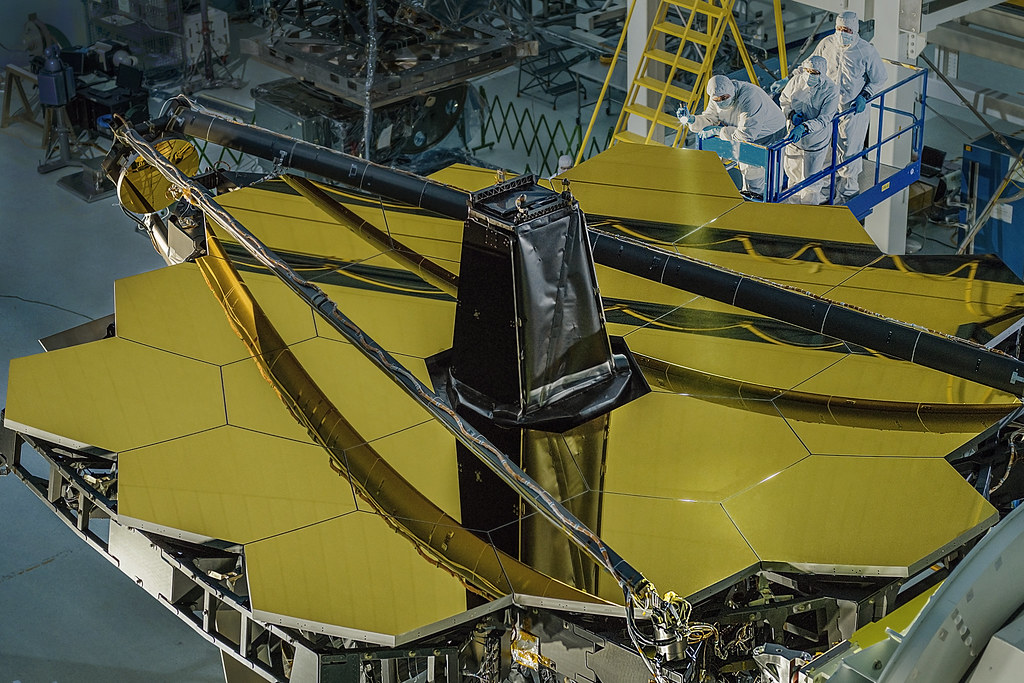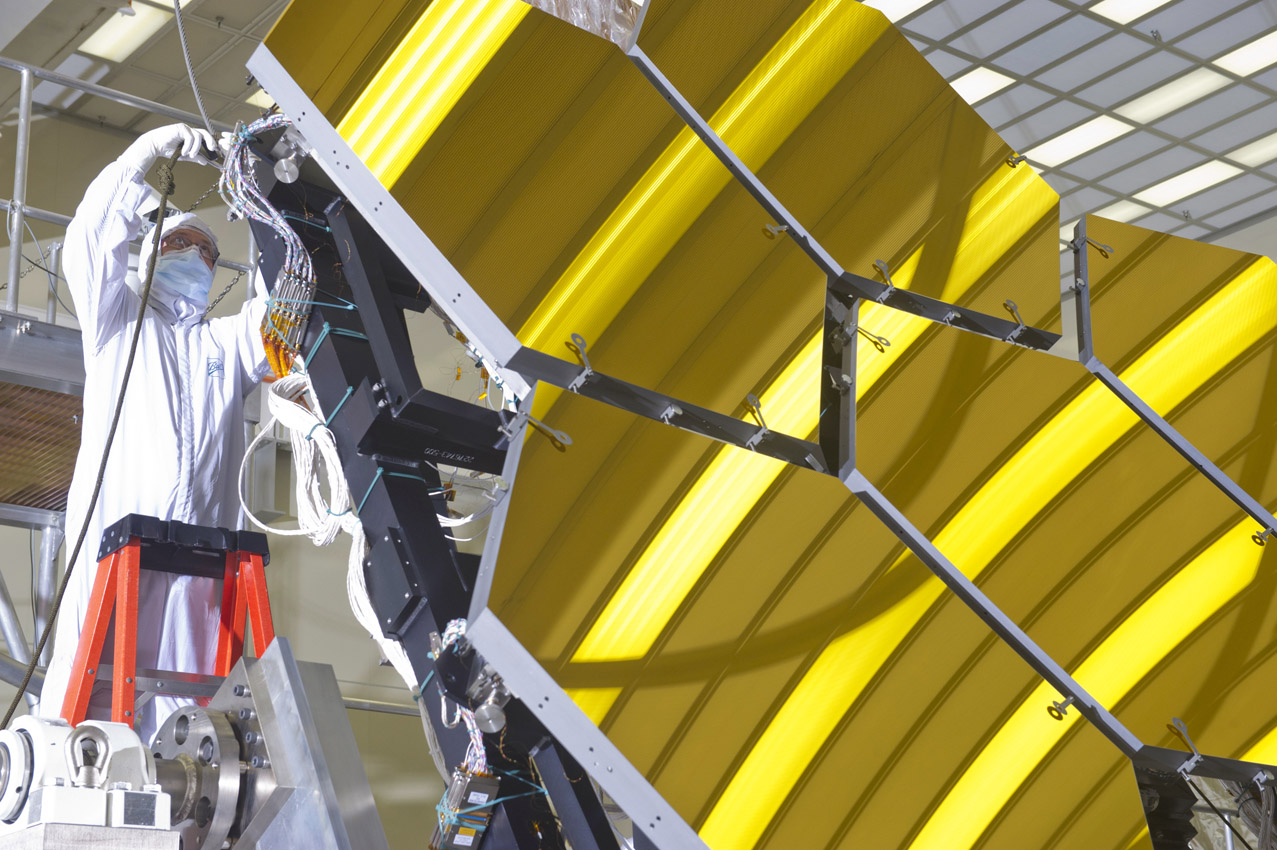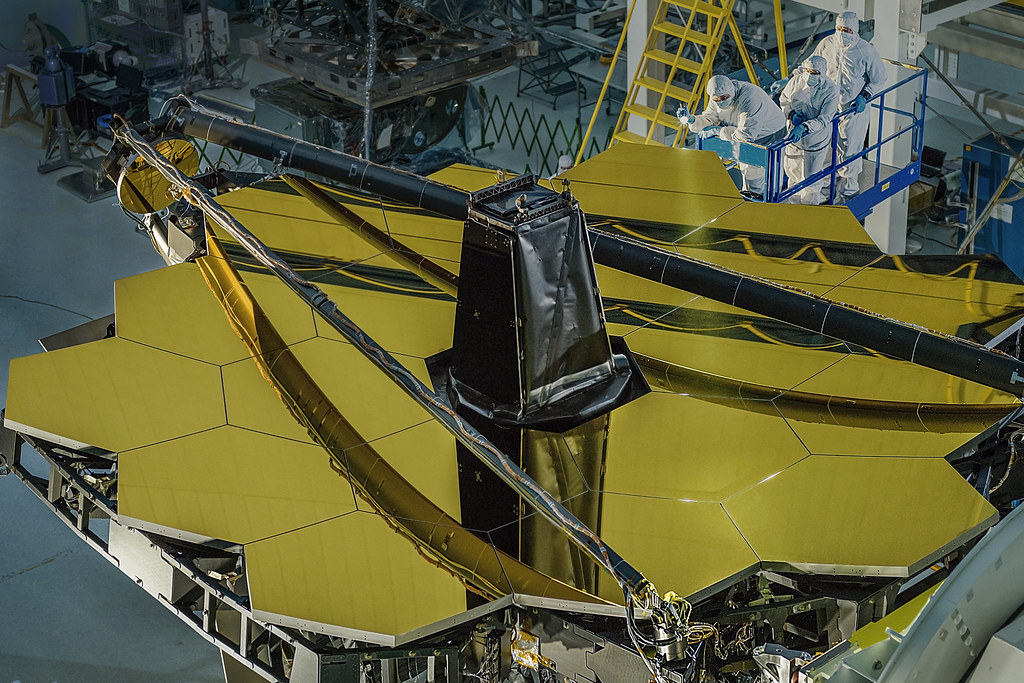
What Is So Special About The James Webb Space Telescope’s Mirrors?
The James Webb Space Telescope launch is right around the corner. This telescope is meant to look into the universe’s past and discover new things we never could see before. However, in order for this telescope to work properly, an incredible amount of work has gone into the development of every single aspect. This includes the massive mirrors working to gather as much light as possible.
One of the features that make the James Webb Space Telescope stand out is the massive mirrors. These mirrors required multiple unique design choices including the hexagonal shape, foldability, actuators, and materials used. All of which work together and solve the large list of complications and provide the data NASA is looking for if everything goes according to plan.
This telescope has not only taken decades to make but billions of dollars as well. However, if successful, the JWST is expected to reveal invaluable information not too long from now. While the James Webb Space Telescope is full of complex and interesting components, the mirrors stand out because of their size, shape, color, importance, and more. Here I will go more in-depth into the design and idea behind the JWST mirrors.
How Do The Mirrors Work?

One of the primary goals of the James Webb Space Telescope is to look back in time to when galaxies were young. Specifically, Webb is planning on looking at celestial bodies over 13 billion light-years away from us. In order to see objects that far away, the James Webb Space Telescope needs to gather as much light as possible. This is part of the reason why the JWST has such a large mirror. A telescope’s sensitivity, or how much detail it can see, is directly related to the size of the mirror area that collects light from the objects being observed. The larger the area the more light collected, just like a larger bucket collects more water in a rain shower than a small one. The James Webb Space Telescope has many different mirrors each with a specific purpose. The main mirror is the largest and is made up of many smaller mirrors. You then have the secondary mirror which is round and located at the end of the boom arms. Together these mirrors work and provide one-of-a-kind information from the past.
JWST Mirror Features

Shape – The first unique aspect of the James Webb Space Telescope is the shape of the mirrors. The primary mirror of Webb is made up of 18 separate hexagonal mirrors. The reason they are this shape is that hexagons allow for a roughly circular, segmented mirror with a high filling factor and six-fold symmetry. The high filling factor refers to the gaps between the mirrors. With a high filling factor, there is practically no space between them which is important for the success of the mirror. If the mirrors were a circle, for example, you would end up with a large mirror filled with gaps losing the light-gathering capabilities. Symmetry also is beneficial because there only needs to be 3 different optical prescriptions for 18 segments, 6 of each. Additionally, with the 18 segments of hexagonal mirrors, they are able to form a circle-like shape in the end. This shape helps direct all the light more accurately onto the most compact region of the detectors. If NASA were to go with an oval mirror, for example, this would produce images that are elongated in one direction. If they choose a square mirror it would send a lot of the light out of the central region. Both have negative effects on the most important result and factor of gathering as much light as possible.
Foldability – Another interesting and complex feature of the James Webb Space Telescope is its ability to fold. This also plays into the purpose and reasons for having multiple smaller hexagonal-shaped mirrors making up the primary mirror. Specifically, the telescope was made in separate segments that can fold so it will fit within the fairings of the rocket. Once in space, the telescope will unfold. Each of the hexagonal smaller mirrors within the telescope is 1.2 meters in diameter. This combines into a primary mirror diameter of 6.5 meters. This combined with the massive sun shield stops the JWST from fitting in any current launch vehicles on the market without folding. This is a very complicated process as the mirrors are fragile and have to work perfectly once in space.
Actuators – The next interesting aspect of the JWST is the actuators. Unfortunately, once in space, it’s not as easy as unfolding the telescope and looking into the past. The James Webb Space Telescope needs to focus and orient each one of the 18 mirrors perfectly to focus on whatever it’s looking at. To solve this issue the telescope has actuators installed behind each of the mirrors. These tiny mechanical motors provide the perfect focus necessary. The primary mirror segments and secondary mirror are moved by six actuators that are attached to the back of each mirror piece. The primary mirror segments also have an additional actuator at their center that adjusts its curvature. While this is happening the telescope’s tertiary mirror remains stationary. This process is unbelievably precise in order to get the mirrors practically perfect. To put it in perspective, Lee Feinberg, who works as the Webb Optical Telescope Element Manager at NASA Goddard mentioned “Aligning the primary mirror segments as though they are a single large mirror means each mirror is aligned to 1/10,000th the thickness of a human hair. What’s even more amazing is that the engineers and scientists working on the Webb telescope literally had to invent how to do this.”
Material – The Last feature of the JWST that I want to mention is the materials used on the mirror. This includes the primary material along with the gold plating on top. Starting with the primary material, each of the hexagonal mirrors is made from beryllium. This is a light metal that has a long list of properties perfect for Webb’s application. The first benefit is high strength along with low weight in comparison. Whenever launching anything into space these two factors are very important. This metal is so strong and lightweight that it’s often used to build parts for supersonic airplanes or rockets such as the Space Shuttle. The next is the metal’s ability to hold shape and strength through a wide range of different temperatures. If everything works as intended, the primary mirror will stay very cold to help it operate properly. Beryllium is also a good conductor of electricity and heat and is not magnetic either. The bright and reflective gold is another part of the telescope which stands out. Each of the mirrors is covered in a microscopically thin layer of gold. This optimizes them for reflecting infrared light, which is the primary wavelength of light this telescope will observe, enhancing its capabilities.
Conclusion
Telescopes provide incredible information about things literally out of this world. While the Hubble gathered countless images and invaluable information, the James Webb Space Telescope is up next. It is much bigger and meant to look far into the past of the universe. One of the ways it will do this is with its large and unique mirrors. These mirrors use a combination of specially designed actuators, materials, shape, and foldability. All of which combine into a single telescope meant to teach us more about the universe we live in. With the launch expected to happen very soon, it’s possible we watch each aspect of the telescope play its role. We will have to wait and see how successful the telescope is and the information it provides to us.
